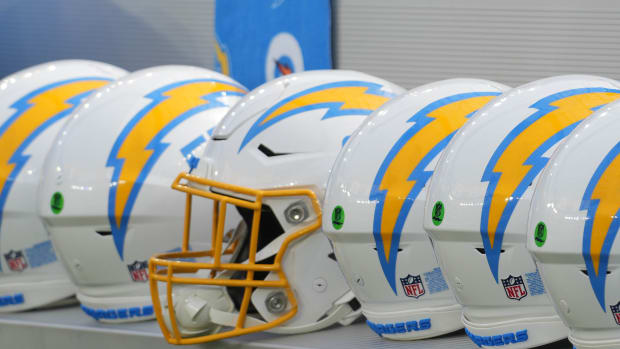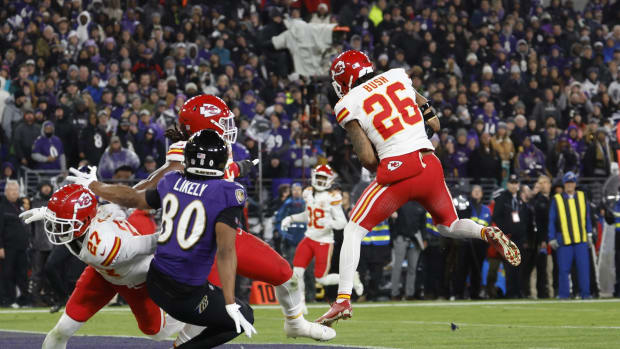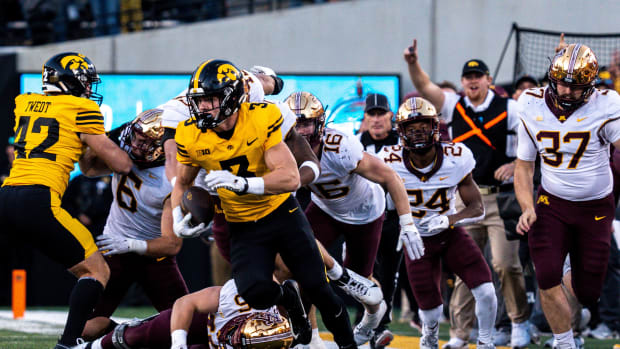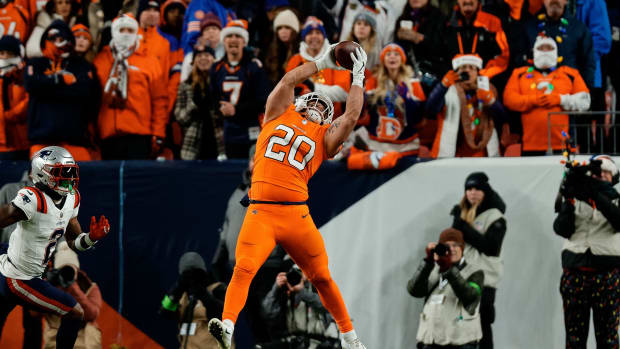Move to May just latest turn in NFL draft's evolution over time
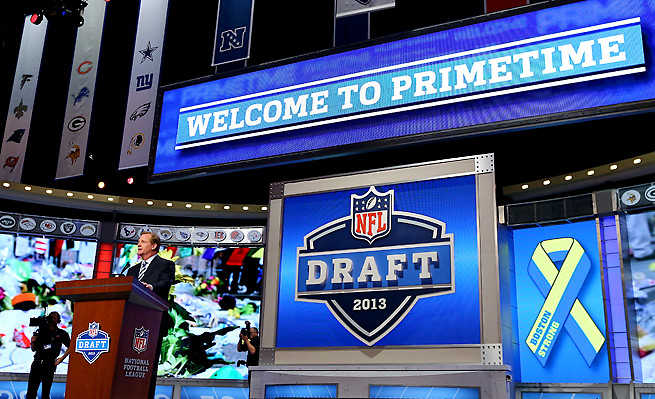
The NFL draft is a major event on spring's sports calendar, but it only recently became that way.
Al Bello/Getty Images
The NFL draft is on the move -- again.
It was announced this week that after 28 seasons as a fixture in late April, the 2014 draft will be switching to a new date, either beginning May 8 or May 15, the latest date ever for the league's premier player procurement procedure.
If you ask the NFL what was wrong with late April, the league will blame the Easter bunny. Turns out Easter week 2014 falls during what would have been the draft's usual time, meaning instead of large football players, Radio City Music Hall will be filled with small children attending the annual Easter shebang. Obviously, Roger Goodell's staff could have found a suitable substitute arena elsewhere in one of New York City's 300 square miles, but rather than change venues the NFL is changing times.
BANKS: Teams not buying Easter excuse
Not that this is anything new. The NFL draft has evolved considerably over time, into the behemoth it is today. The timing of the draft has been one of the greatest areas of change; it has been held in seven different months since its inception on Feb. 8, 1936 at the Ritz-Carlton Hotel in Philadelphia, going as late as May 4 in the 1970s to as early as November in the 1950s and '60s.
Those late November and early December drafts were bizarre and represent as much as any other development the profound changes the NFL has experienced during the past 60 years.
The first NFL drafts were a winter event, usually held in either December or January. The exceptions were three April drafts held during the war years of 1943-45.
But in 1955 the league jumped the draft to Nov. 29, a surprisingly early date considering that the NFL season was still going on and that the draft order didn't always match the final regular season standings. Finishing last didn't always mean drafting first.
There were a few reasons for the move to the week after Thanksgiving. During the mid-1950s, college football was the more popular gridiron sport in most parts of the country. A late fall draft allowed to NFL to use the momentum of the just-concluding college season to build more interest in the pro game by selecting some of the best-known football players in the country.
Also, with growing competition from the Canadian Football League, the NFL had the chance to sign college players as soon as their eligibility ended, be it after the regular season or a bowl game.
Remember, too, that pro football didn't pay very well during the 1950s. College players, particularly Ivy Leaguers, often received more lucrative offers from private business. Princeton running back Dick Kazmaier, the 1951 Heisman Trophy winner whose achievements put him on the cover of TIME, spurned the NFL. He explained the decision by saying by the time the 1952 NFL draft took place on Jan. 17, many of his Princeton teammates had already accepted offers to go into business and he didn't want to fall too far behind in the corporate game.
And, yes, there was also the thinking in some august academic circles that professional football was an activity for inarticulate ruffians and certainly no place for an educated Ivy League grad.
A late November-early December draft let all collegians know, Ivy League or otherwise, that they had a job offer in hand.
The late autumn selection became even more crucial to the NFL's growth when the rival American Football League kicked off play in 1960. The NFL needed to sign college players before the AFL snapped them up, so the November draft continued into 1965.
Not that many fans cared when the draft was conducted. There were no combines, mock drafts or draft analysts to stoke interest in a particular team's selections. Most fans learned about the draft not live on television or radio but in the next day's newspaper. There were no draft grades.
Of course, drafting this early had its drawbacks. NFL teams had little time to interview prospective draftees individually, and there were no scouting combines or pro days to determine if success on the college playing field could translate into a standout pro career.
Scouts and front offices, far smaller and often less astute than today's draft specialists, had to rely on what they saw on the field. If teams didn't have a chance to scout a player in person, they utilized newspaper clippings to follow a particular player.
KING: Teams 'absolutely hate' draft move to May
Had a fan somehow wandered into a hotel where the draft was taking place, they might have seen NFL scouts and executives thumbing through the pages of Street & Smith's popular college football preview. Of course, Street & Smith concentrated on the major colleges and conferences. There was little information on players from the historically black colleges such as Grambling, Morgan State and Florida A&M, schools whose alumni would ultimately leave a lasting impact on the NFL.
AFL franchises such as Al Davis' Oakland Raiders and Lamar Hunt's Kansas City Chiefs were much more adept at recognizing the skills of players from the smaller black schools.
Some old-line NFL teams ultimately took a hit from their lack of knowledge of black college players. The Washington Redskins didn't integrate until 1962 and didn't make the playoffs between 1945 and 1971. The New York Giants, one of the NFL's flagship franchises, drafted only one black player with its first pick prior to the 1970 NFL-AFL merger.
After the NFL-AFL merger in June 1966, the first common draft was held March 14, 1967. The draft then settled into a late January-early February date until being moved to the spring in 1976. It finally made a home in late April starting in 1986.
At least until this past week.


































